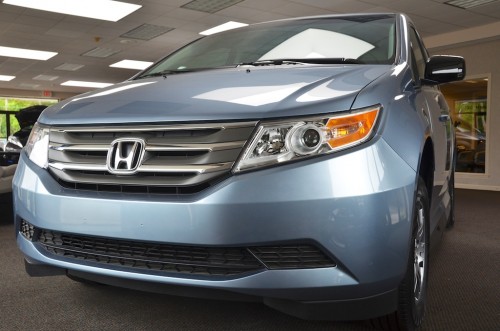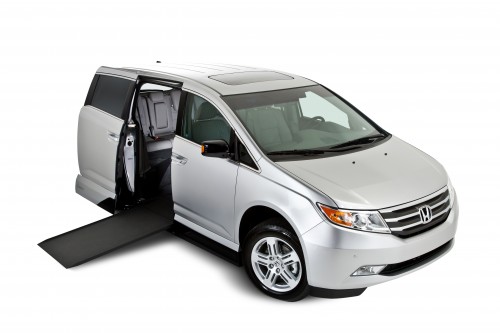If your ever in a accident in your wheelchair van and have insurance questions or need your to have repairs made contact the experts at the Mobility Center in Bridgewater, MA with your questions 508-697-6006

We all know that we need to carry insurance on our Honda wheelchair vans. We understand that it’s a legal requirement and we recognize the value of being properly insured in case of an accident. Most of us are not insurance experts, though. In fact, some aspects of vehicle insurance confuse many of us. Let’s look at how wheelchair van insurance really works.
What Are You Buying?
When you insure your Odyssey or Element, what are you actually buying? “Insurance” actually consists of many different elements. Your policy may or may not have provisions covering all of them. They include:
- Bodily Injury Liability: This covers you if your Honda hurts or kills someone in an accident.
- Comprehensive: This covers damage to your Honda from non-accident sources like weather and vandalism.
- Property Damage Liability: This is legally required everywhere. It’s the portion of your insurance that covers damage to the other party’s vehicle after an accident.
- Collision: This covers damage to your Honda if it’s involved in an accident.
- Medical Payment: This provides coverage for you and/or your passengers for medical expenses related to an accident.
- Uninsured Motorist: If someone who doesn’t have insurance injures you, this will cover you.
The limits of your coverage and your deductibles for each element of your policy will vary based upon what you’ve purchased from your insurance company.
What Determines Your Rates?
How do insurance companies decide how much to charge you for that coverage? They look at a variety of factors.
Your actual vehicle is an important part of the puzzle. The value of your Odyssey or Element will have an impact on the price of your policy, because the cost of covering replacement and repair vary based upon the vehicle.
There’s more to it than that, though. Insurance companies also look at the vehicle type to help determine how likely you will be to utilize your insurance coverage. That’s why it’s cheaper to insure an Odyssey than an Element–minivans tend to have fewer significant claims than do small SUVs.
You can also expect the modifications you’ve made to your Honda wheelchair van to influence policy pricing. You may be an excellent driver, but the fact that modified vehicles tend to be involved in a relatively high number of claims is reason enough for insurance companies to increase premiums on wheelchair vans, in most cases.
You are part of the pricing equation, too. Your personal driving record, age, gender and any license restrictions you may have will influence the price of insurance. Non-driving related factors such as home ownership, credit rating, and where you live will also influence pricing. Insurance companies look at multiple variables to determine your probable level of risk.
Finally, the policy limits and coverage you select will influence your insurance pricing. If you’re only purchasing the minimum requirement of liability insurance in an effort to “stay legal,” you’ll spend a lot less than you would for full coverage with all available protections.
Purchasing insurance is always a process of balancing the best possible coverage with affordability. The levels of coverage you need and the amount you can spend will, obviously, vary based on a series of individual factors. The most important thing to remember is to be certain you have adequate coverage to meet both the legal requirements and your personal needs.
You’ll also want to consider insuring your mobility aids, vehicle modifications and equipment. Most vehicle policies will cover your Odyssey or Element, but they won’t cover your lift or ramp. They’ll replace your bumper if you get in an accident, but they won’t necessarily pay to fix your low-effort steering system if it’s damaged.
Insuring a Honda wheelchair van isn’t really a complicated procedure. When you understand the different kinds of coverage and how rates are set, the process is even easier to understand.



